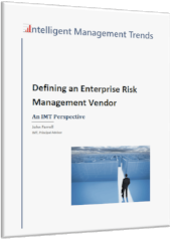Three perspectives on business decision making styles:
- Well-known analysis paralysis critic Lee Iacocca proclaims, "So what do we do? Anything. Something. So long as we just don't sit there. If we screw it up, start over. Try something else. If we wait until we've satisfied all the uncertainties, it may be too late."
- Paraphrasing words of wisdom from Cabletron co-founder and former New Hampshire Governor Craig Benson from a Babson entrepreneurship course, fellow co-founder Robert Levine and he
 succeeded in part because of what they did not know. If they had more insight into the challenges ahead in their new venture, they may have bailed out before it began.
succeeded in part because of what they did not know. If they had more insight into the challenges ahead in their new venture, they may have bailed out before it began. - The MIT Sloan Management Review/IBM Institute for Business Value survey of over 3,000 executives, managers and analysts found top-performing organizations use analytics five times more than lower performers.
So, what is the verdict on analysis? Is it a hindrance or a necessity for effective decision-making processes?
Some business leaders want you to believe they make good business decisions based on their experience and intuition, or just plain gut instincts. Others succeed through perseverance. Unfortunately, not all business leaders have the specific experience, instincts, determination, or luck necessary to make the right management decisions without an analytically-based decision-making process.
Core Business Decision Making Elements
Whether done explicitly in a group or implicitly in a thought process, a business decision-making process includes the following five steps:
- Framing a question in the context of organizational objectives.
- Gathering and analyzing relevant information.
- Identifying alternative actions.
- Establishing the logic for the decision.
- Communicating the course of action.
The inclusion of an analytical step seems obvious in management concepts, so why do business analysts and risk managers still encounter resistance from business decision makers?
Sometimes the Iaccoca perspective on management styles takes hold with the belief that assertive immediate action has the greatest upside potential for first mover advantage and allows time to correct downside risks. Decision maker statements of resistance toward structured business analysis typically revolve around the perception of analysis as tedious, time consuming, too complex, or too costly. According to the Economist Intelligence Unit’s Fall Guys, Risk Management in the Front Line study sponsored by ACE and KPMG, only 33% of 500 respondents agreed business managers are happy to seek advice from the risk function.
The happiness of business managers should not be a priority when it comes to business and risk analysis as part of decision making processes. Any misperceptions and biases must be addressed. Yes, analysis requires hard work and sometimes the conclusion is a cold slap in the face, but business analytics are not necessarily time consuming or costly.
Technology Advances Reduce Business Decision Time and Risks
A successful business decision requires achieving enough accuracy in each of the five primary decision-making steps, plus enough speed, to match or beat competitive market conditions.
Fortunately, standard business processes and technology trends are increasing the accuracy and timeliness of the second decision-making step with efficient data management, business intelligence tools, and risk analytics solutions. Decision support systems are integrating more advanced analytics to offer timely prescriptive outcomes and decision suggestions as well. All decision-making steps should remain human-led, but automation is advancing to both augment human decision-making precision and speed.
IBM Watson and other emerging cognitive systems demonstrate increasing efficiency in automated data filtering and identification of alternative response choices. All of this can happen in a fraction of a second. The only threat to the timeliness of analytics in a corporate decision-making process remains the ability to gather accurate data.
Current management trends are eliminating intuition-based decision making as a management style option. Shareholders, regulators, customers, creditors, ratings companies, and suppliers are increasingly demanding thorough analytics to reduce risks in management decision-making processes.
Eliminate risk and analysis paralysis by automating data collection and using scenario analysis as much as possible to achieve calculation acceleration. The gating factors for improved management proficiency now lie with the board and C-suite who must frame the right questions and establish the guiding principles and logic for their organization's business decision rules.


 succeeded in part because of what they did not know. If they had more insight into the challenges ahead in their new venture, they may have bailed out before it began.
succeeded in part because of what they did not know. If they had more insight into the challenges ahead in their new venture, they may have bailed out before it began.




